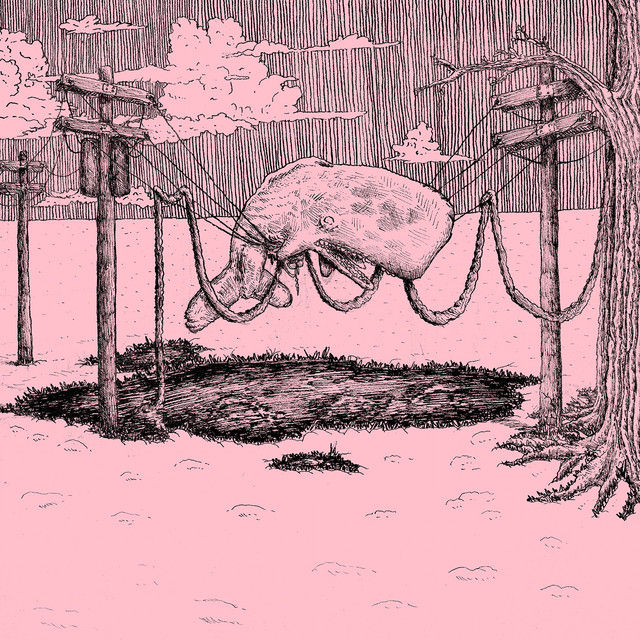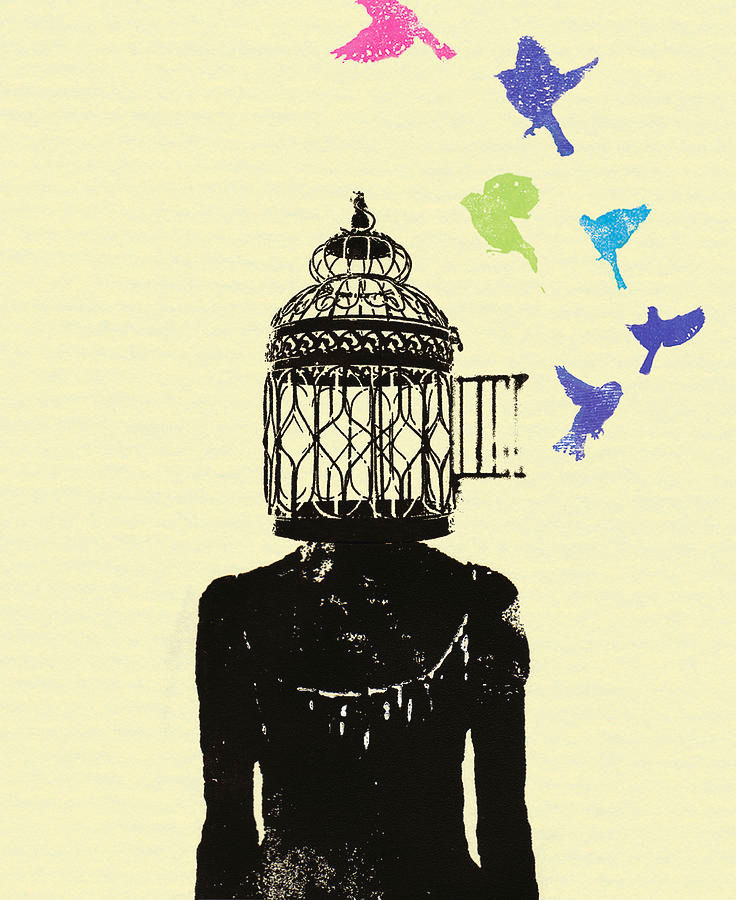"I've Outgrown These Innards": Selections from the whaler
- Izzy Doyle
- Nov 16, 2024
- 6 min read
Updated: Dec 19, 2024
The queer narrative experience has always been punctuated by artistic expression. Home Is Where's the whaler is no exception.

Released in 2023 by queer folk punk east coast Midwest emo group Home Is Where, the whaler deals with uncomfortable topics in an equally violent and eloquent manner. The album delves into the complexities of the transgender experience, bringing to light the struggles and triumphs of individuals navigating the intersection of gender identity and societal norms. I will be analyzing The Whaler for themes related to the transgender experience, especially related to body dysmorphia and body autonomy.
LGBTQIA+ youth are 50-70% more likely to experience body dysmorphia when compared to their cisgender peers (Boroughs et al., 2010). This makes it all the more important to destigmatize these issues, and provide Queer and transgender youth with a sense of community and representation. Representation in media and the creation of an illness narrative can serve as a space for those experiencing gender dysphoria to debunk negative stigma surrounding the nature of their bodies and bodily experiences.
The very first thing any listener will notice is that lead vocalist Bea MacDonald immediately commands attention. She nearly wails her way through most of the album in an impressive feat of vocal strength, in a way that is both equally haunting and devastating to listen to. You can feel pain beneath her words, and as MacDonald shifts effortlessly between singing, yelling, and screaming, the raw emotional undertaking of expressing such heartfelt turmoil rises to the surface.
In addition to vocals, MacDonald also plays the singing saw and the harmonica, which add to the eerie, folk-punk narrative throughline of the group's performance.
Many of the thematic elements of Home Is Where's lyrics relate to queer-specific issues such as gender dysphoria, suicidal ideation, and depression. In this way, the whaler functions simultaneously as a concept album about MacDonald’s lived experiences as a transgender woman and an illness narrative. Throughout the album, she utilizes a unique narrative structure to express the frustrations of living in an unforgiving society which refuses to accept an identity outside of the normative experience. MacDonald's perspective draws mostly from a sense of utter defeat and hopelessness at the prospect of a perceived loss of freedom. But she does not give the impression of someone who is apathetic- through her biting lyrics, aggressive vocals, and energetic performances, she actively fights back against a world where many feel they cannot. In this way, she expresses the desire to be unapologetically herself, without judgement and restriction. Society imposes a lack of freedom in expression and identity, and MacDonald's disillusionment is apparent throughout the album. the whaler is a visceral reaction to this disillusionment, and throughout, Home Is Where unabashedly declares their desire to live, despite the inherent tragedy of the human existence.
skin meadow
Stitch the sky to treetops
I talk my stomach in knots
There's no room on the roadside
For any more memorials
As the first song on the album, skin meadow sets the tone for "the whaler"'s overarching thematic approach to the transgender experience. Likening herself to a roadside memorial, MacDonald expresses the simultaneously ubiquitous and all-too-forgotten experiences of those who have come before her. At several points throughout the album, frontwoman Bea MacDonald alludes to the idea that her transness others her, or otherwise isolates her on the fringes of the 'normative' experience. For example, the song nursing home riot opens with "There's no room in the ground for us".
People in non-normative bodies are often 'othered' for their differences, and MacDonald's insistence that there is no space in which her body can exist, even in death, is a feeling shared by many in non-normative bodies. In this way, the body is a monstrous, bloody being, reaching out for love and acceptance and instead being met with horror and disgust. Half- joking, she wryly asks what it might look like to literally spill your guts to someone else. MacDonald sees something honest and true in this kind of expression - There is nothing left to hide by uncovering the deepest and most undisclosed innards of the human experience.
Still, there is something beautiful about MacDonald's penchant for gore and violence - she asks us to consider what it might look like if the physical body reflected the innermost desires of the inner self: if the outside matched the inside, what would you look like? It is easy to understand why she might feel this way, as for many transgender people, much of the distress of living comes from a disconnect between the inner self and the outward expression of the self beyond their control. Being able to transcend the bodily experience becomes a fantasy, even if it occurs violently.
whaling for sport
I've outgrown these innards
I am the whaler
Cleaning guts from gutters
The motif of the whaler is perhaps the most important in understanding how Bea MacDonald views her own transness. Hunting for sport, and especially the practice of whaling, is an inherently violent act. There is a very distinct power imbalance between the hunter and the hunted. The hatred and ridicule a person living in a non-normative body may experience for simply existing may indeed make them feel like a scared, helpless animal cowering in the face of a loaded harpoon gun. Historically, queer and transgender people have been hunted down in the most literal sense of the word. Movements that seek to systemically obliterate queerness (the Lavender Scare, hate crimes, anti-trans bills) have claimed the lives and bodies of many.
MacDonald's positioning of herself as the hunter is a way to reclaim some of the autonomy the LGBTQ+ community is losing every day. But she is not just the whaler- she is also the thing the whaler hunts. A very common piece of rhetorical allegory shared by the transgender community is the idea of killing the 'old self'. In this way, the whaler functions as a metaphorical representation of both the dysphoric, ill self and the forces seeking to alter or 'kill' this self. Another way to analyze the role of the whaler is as a malicious force who wishes harm upon those who are simply existing. In this narrative, the whaler has no reason to kill a whale- they are simply hunting for sport. The whale's life is threatened for what seems to be no real reason, and there is no real way to stop this death (metaphoric or otherwise) from occurring. Many transgender and Queer people live with the reality that they only have two choices: disguise or ignore fundamental aspects of their being and be left alone, or suffer pain and scrutiny for accepting this part of themselves. In either case, the choice leads to a 'death' of the self- the impossible reality of being forced to choose between the least painful of these can be likened to the feeling of being hunted. With a harpoon gun to its head, the whale confronts the ephemeral nature of identity and, indeed, of life itself.
yes! yes! a thousand times yes!
Trading flesh for flypaper
And armed to the dentures
We don a regalia
Of useless genitalia
yes! yes! a thousand times yes! is perhaps the most overtly open about the reality of a Queer person's experiences with societal expectations of heterosexuality. This experience is In the narrative structure of this song, a marriage is taking place, but the proceedings are haunted by a sense of repulsion and indifference. There is no pleasure in what is often billed as the happiest day of a person's life. The occasion is completely devoid of any joy, and the wedding feels more like a routine business transaction or an obligation as opposed to an intentional expression of real love. When the minister asks the bride and the groom to kiss, they instead drive home in separate cars. This series of interactions could be interpreted as a depiction of forced heterosexuality, in which both parties are completely defeated and forced to accept the fate that befalls them. The ramifications of living a life (or a lie) unexamined are clear: they are doomed to a loveless life and an existence without a meaningful romantic relationship.
the whaler is at once a celebration of complete, unabashed authenticity in life and a eulogy for the already damned. It swings between utter hopelessness and raging anger, exemplifying the constant and cyclical nature of a life thoroughly examined. MacDonald gives the impression that she is somehow privy to a part of the human experience we just haven't seen yet; she knows something we don't and asks us to reflect on it. This profound self-awareness and mind-body connection permeates every song on the album, and leaves the listener with more questions than answers. This is a good thing - it is impossible to leave the album without feeling a renewed perception of the bodily experience.
The desire to be free and unapologetic at any cost is something everyone can aspire to. Home Is Where asks us to embrace that desire before it is too late.


Comments